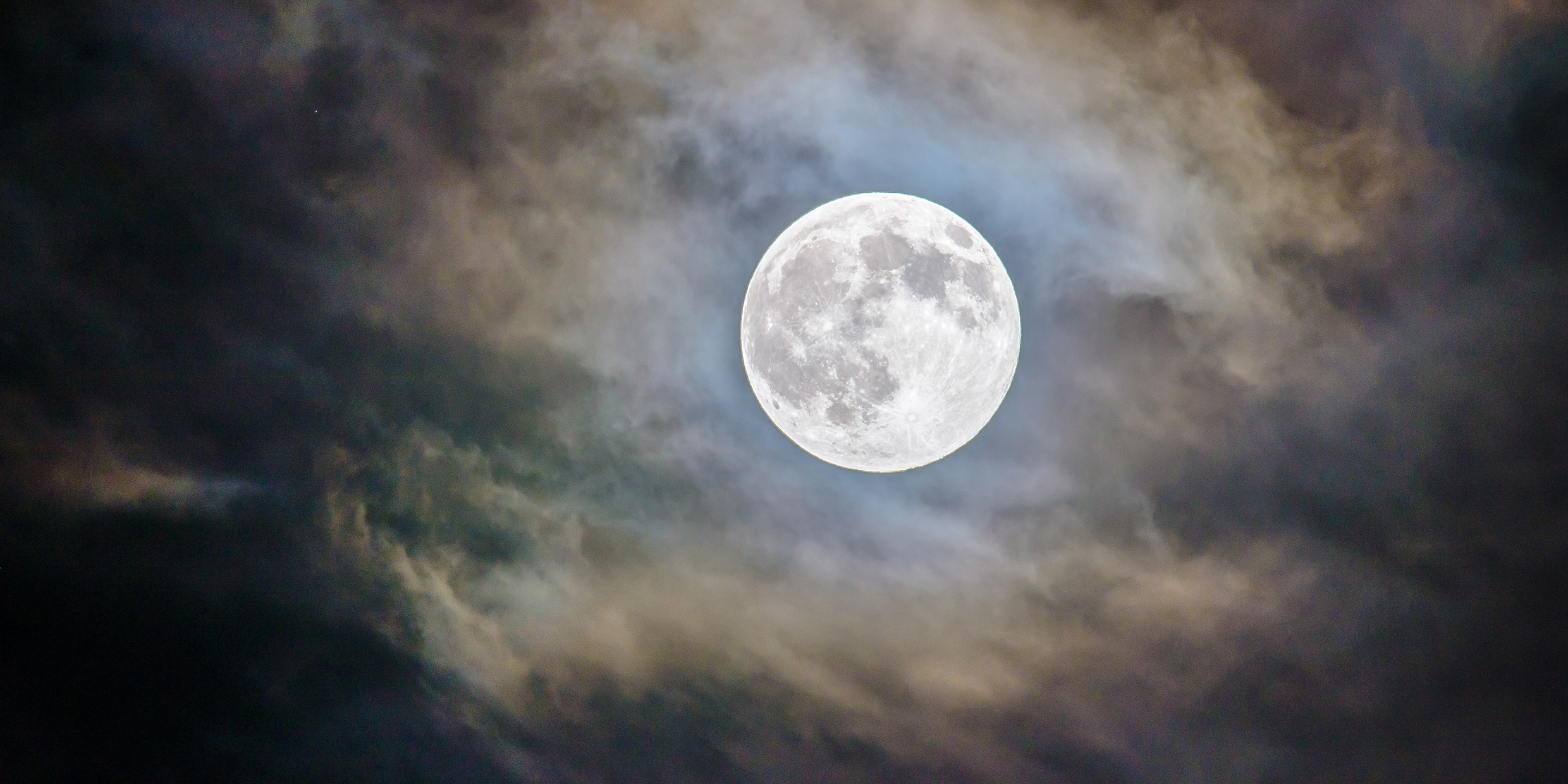Originally published 5 February 2002
Last week, I watched a just-past-full moon rise over the sea, from a place where the sky was dark enough to observe a lunar “dawn” — the sky noticeably brightening before the moon appeared above the horizon. Not as spectacular as a solar dawn, but beautiful in its own subtle way.
The sun is a million times brighter than the moon, even when the moon is full. Still, the moon is a thousand times brighter than all the stars together, and bigger compared to its planet than any other satellite in the solar system, with the exception of Pluto’s mysterious companion, Charon.
The tiny Martian moons, Phobos and Deimos, are not much brighter than stars in the Martian sky.
Our exceptionally large and luminous moon is a boon for lovers and nighttime walkers, a nuisance for observational astronomers (who prefer dark nights), and a positive embarrassment for the theoretical astronomers who try to explain where the moon came from.
Theories for the origin of the moon generally have stumbled on the block of the moon’s outlandish size.
In the past, three kinds of theories have been evoked for explaining the moon’s origin. They can be classified by calling the moon the “sibling,” the “child,” or the “spouse” of Earth.
The “sibling” theory assumes that the Earth and the moon condensed together from an eddy in the larger whirlpool of gathering dust and gases that became the solar system.
The “child” theory assumes that the moon’s material was spun off from the outer layers of a rapidly spinning Earth, early in Earth’s history when the planet was still mostly molten.
The “spouse” theory assumes that the moon formed somewhere else in the solar system and was subsequently captured by Earth’s gravity.
Each of these theories has dynamical problems that are not easily resolved.
In recent years, a fourth theory of the moon’s origin has gained support, based on computer simulations by Alastair Cameron and others. This theory assumes that the young Earth suffered a grazing impact by a Mars-sized object. The collision blasted into Earth orbit a mass of molten materials, partly from the Earth, partly from the colliding object, which subsequently solidified to become the moon.
The impact theory agrees with current ideas about the formation of the solar system, which apparently began as a whirlpool of gas and dust around a new star, the sun, and condensed in stages. First, the gas and dust collected gravitationally into pea-sized objects. Then the “peas” gathered into chunks the size of buildings. The “buildings” collided to make bigger bodies, and so on until the present planets came into being.
In the last stages of this process, a few very large impacts can be expected. One of these massive impacts may have splashed the moon into being.
Cameron’s simulation, although successfully accounting for many features of the Earth-moon system, left a few problems unresolved, such as the moon’s paucity of iron compared to the Earth. If the collision occurred early in the Earth’s formation, as Cameron’s simulation indicated, then both Earth and moon should have subsequently gathered still more celestial materials to themselves, including iron.
Last year [in 2001], astronomers Robin Canup and Erik Asphaug described in the journal, Nature, the most sophisticated attempt yet to simulate the “big splash” on a computer. This was no easy task. It meant plugging into the computer the complex equations for melting and vaporization, and for the mutual gravitational forces between all of the splashed bits of Earth and impact. The calculations are daunting, and only possible with supercomputers.
The new simulations suggest that the big splash happened late in the Earth’s formation, when the planet was essentially complete and its iron sequestered at the core, resolving the problem of the moon’s unusual composition.
The Canup and Asphaug report included an illustration of a dozen stages in their impact simulation, from the moment the impacting body touches Earth, through smush and splash. It’s all over in 24 hours, with gravity left to tidy things up.
Seeing the thing happen on the screen of a computer is almost like being there on the allegorical sixth day when the “lesser light” was created. Astronomers are now gearing up even more powerful computers for simulating other details of cosmic creation, including purpose-built computers developed in Japan, called GRAPEs, for Gravity Pipe, that are the fastest machines on the planet.
With these magnificent products of human ingenuity, astronomers are simulating the origin and evolution of sun, moon, and stars, even the big bang itself, pushing back ever closer to that singular moment when perfect darkness yielded to the mysterious command, “Let there be light.”



